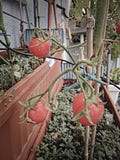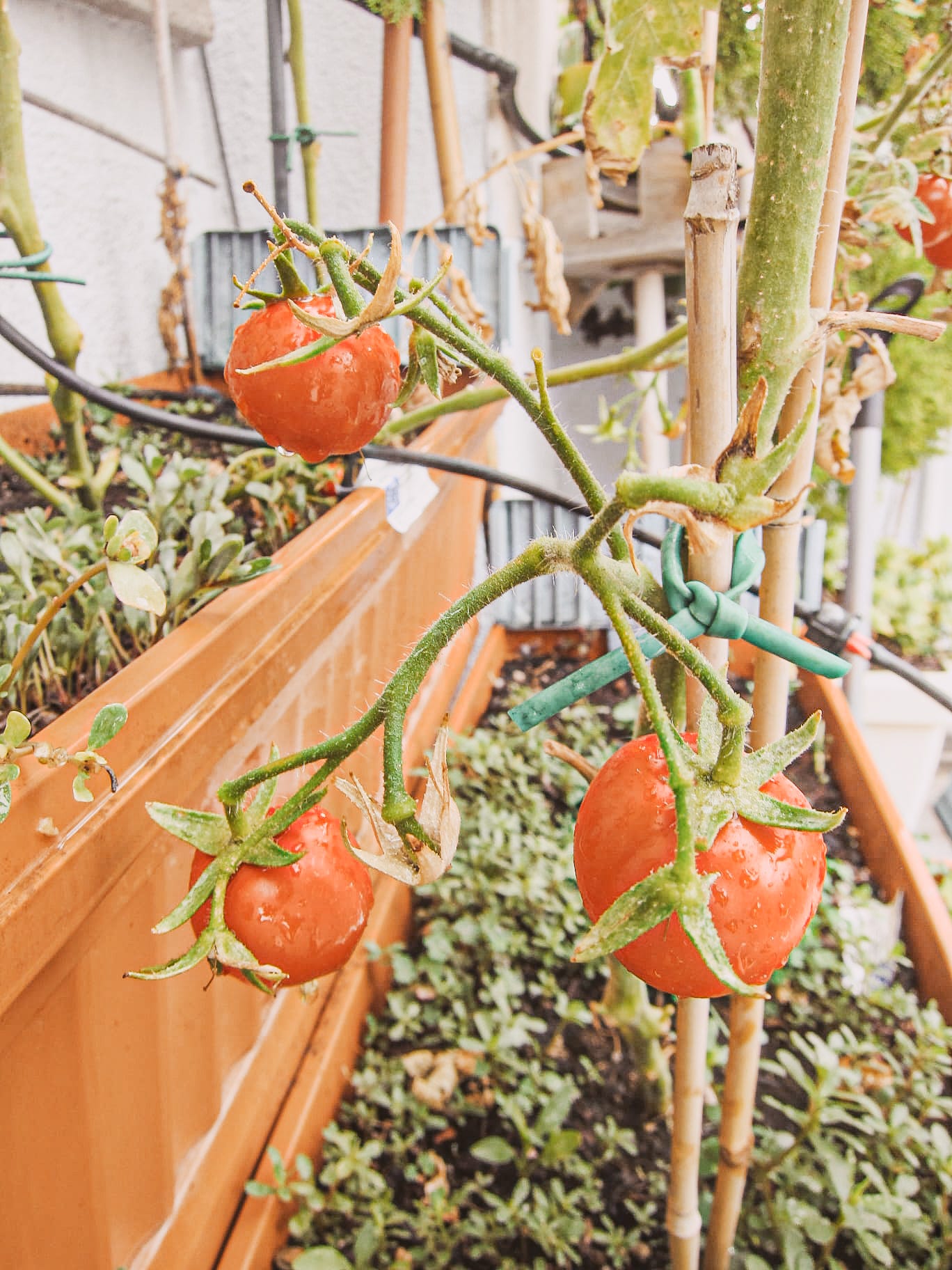Orto e Frutteto: September Flavors and Nonna's Tomato Sugo
The story of why we (don't) love tomatoes in Venice, and Nonna's recipe for pasta all'arrabbiata.
In September 2022, we’re starting a couple of new rubbriche (series) here on Terrazza San Zaccaria. The first one called “Orto e Frutteto” is dedicated to news from the San Zaccaria fruit and vegetable garden. Because as you can read in this feature, Nonna’s sprawling garden consists of several areas: Green courtyard, terraces, altane (roof-top terraces), and loggia.
The articles will cover seasonal fruit and vegetables, and ideas how to cultivate them, other purposes they fulfill, what we learned from the San Zaccaria Library about fruit and vegetables, and of course, recipes using ingredients from this garden.
We’re starting today with pomodori - tomatoes, to which Venetians have a sort of love-hate relationship - as you can discover below.
Did you know? Pomodori - tomatoes arrived in the Venetian Lagoon in the 16th century via Spain and quickly became a curiosità in the gardens of noble families. Leaves and fruit were even used as table centerpieces!
Before we continue talking about tomatoes, you must also know that during the times of La Serenissima, that is until the year 1797, tomatoes were never ever used in the kitchen - in fact, they were even considered poisonous. And to this day, there are some Venetians, like my own grandfather and father, who never use tomatoes, nor would they flavor sea food pasta with tomato sugo.
On the other hand, you do get lots of tomatoes here in Venice, used as topping for bruschetta, to make minestra (vegetable soup) and succulent sugo .. as you’ll discover below.
But then, tomatoes take very well here, growing particularly lush in the vegetable gardens of the northern Lagoon around the Cavallino peninsula, in the midst of “flamingo country”. Watch it below ..
And of course, you can find tomatoes of all sorts and sizes in private gardens, including Nonna’s: Cuore di bue (oxheart tomatoes) thrive in the courtyard garden while the smaller pomodori ciliegini - cherry tomatoes grow in pots on the terrace, as you can see in the images of this post.
By early June, it’s time to harvest, and if we’re lucky, tomatoes from the garden will be around until mid-November. So how do we use them in the kitchen in the first place?
The bulk of Nonna’s tomatoes goes into her sughi, but she also loves eating supper consisting of freshly harvested & sun-warmed tomatoes, crispy-baked white bread, butter, freshly picked basil leaves, olive oil, and coarse sea salt. So delicious and simple - always a feast!
On the other hand, we do love sughi al pomodoro in particular in the fifth season1 as Nonna calls September, and for this purpose, we created a pasta dish which is a variation of pasta all’arrabbiata. What sounds like a typical Italian dish was adapted, based on historical recipes that add spices to condimenti per pasta to bring out the full flavor of fruit or vegetables. We found that in the case of tomatoes, the spice of choice is - cannella - cinnamon. This may sound surprising, but do take a look at the recipe!
To get started, let’s unveil Nonna’s three secrets of making tomato sauce, inspired by Venetian recipes of the 16th century:
Secret #1: Mix fresh and dried tomatoes. Cut the dried tomatoes into tiny pieces to obtain a smooth sugo ==> In historical Venetian recipes from the San Zaccaria library, the dried version of fruit is always used to flavor the fresh (that is, used as “spezia” ).
Secret #2: Use spices to enhance the flavors: Cinnamon, in the case of tomato sugo.
Secret #3: Sugo takes time to prepare: Leave the sugo to simmer with very low heat, for a really long time, like 30 - 50 minutes. After ten minutes, add a hint of cinnamon. Stir carefully now and then, and if the sugo gets too dry, add a few drops of olive oil.
Pasta all’arrabbiata - Venetian style
Ingredients per portion:
Pasta (spaghetti or penne, one handful per person)
2 cuore di bue (oxheart) tomatoes
1 pomodoro secco (dried tomato), cut into small cubes
1 cup of pomodori pelati (canned tomatoes)
Peperoncino (red pepper, freshly harvested in the garden), or chili flakes
Parsley, fine sea salt, black pepper (freshly ground), cinnamon
A tiny glass of red wine (like Amarone) - optional
Cheese of your choice (Asiago, Taleggio, Parmesan, or Pecorino).
How to prepare Nonna’s pasta dish:
Cut one oxheart tomato into tiny pieces and fry in olive oil for two minutes. Add the dried tomatoes and peppers, also cut into tiny pieces, and fry for another minute.
Add the canned tomatoes (pomodori pelati), sea salt, pepper, a hint of chili, and just the tiniest amount of cinnamon. Leave to simmer for 30 - 50 minutes with very low heat. Of course, to save energy in times like these, you could also cook the sugo fast - what I’m referring here is the original recipe, in which cooking takes longer to bring out all the flavors.
Five minutes before your sugo is ready, add garden herbs like parsley, also cut into tiny pieces.
Cut the second oxheart tomato into slices and carefully fry them in olive oil in a pan on both sides, for about 3 minutes. You will use this to decorate the pasta dish.
Once your sugo is ready, cook the pasta al dente. Please note: Pasta can never wait. After draining it, it must be added to the sugo immediately. Always make sure your sugo is ready!
How to present your pasta all’arrabbiata on the table: Add grated cheese of your choice, usually parmigiano or taleggio. Add a few drops of olive oil and sprinkle with freshly ground black pepper. Decorate with the fried tomato slices.

Variation: Pasta giardiniera:
You can further flavor your pasta dish by adding melanzane (eggplants) to the sugo: Cut the eggplant into tiny dices, season with salt and pepper and cook in a second pan in as little water as possible until they turn very soft. Then carefully add a few drops of olive oil, leave to simmer for another minute, and add everything plus the remaining water (!) to the sugo. Don’t stir but leave the sugo with the melanzani to simmer for another five minutes. Add the pasta and enjoy!
The fifth season (la quinta stagione) refers to a fictive season between summer and autumn. Venetian gardeners' expression, for now, call it “summer harvest time”. It starts sometime after Ferragosto, when the colors of the sky and sea take on a deep blue hue, and it lasts until late September / early October, just before fall sets in.







Such a wonderful post! That tomato sauce looks simply divine. I am going to use your method the next time I make tomato sauce. Iris, I would love to interview you for my podcast if you are amenable. Will you let me know? You can send me an e-mail if easier: foodinbooks@gmail.com. I would love to talk books set in Venice and food from the region. Thank you for your consideration!